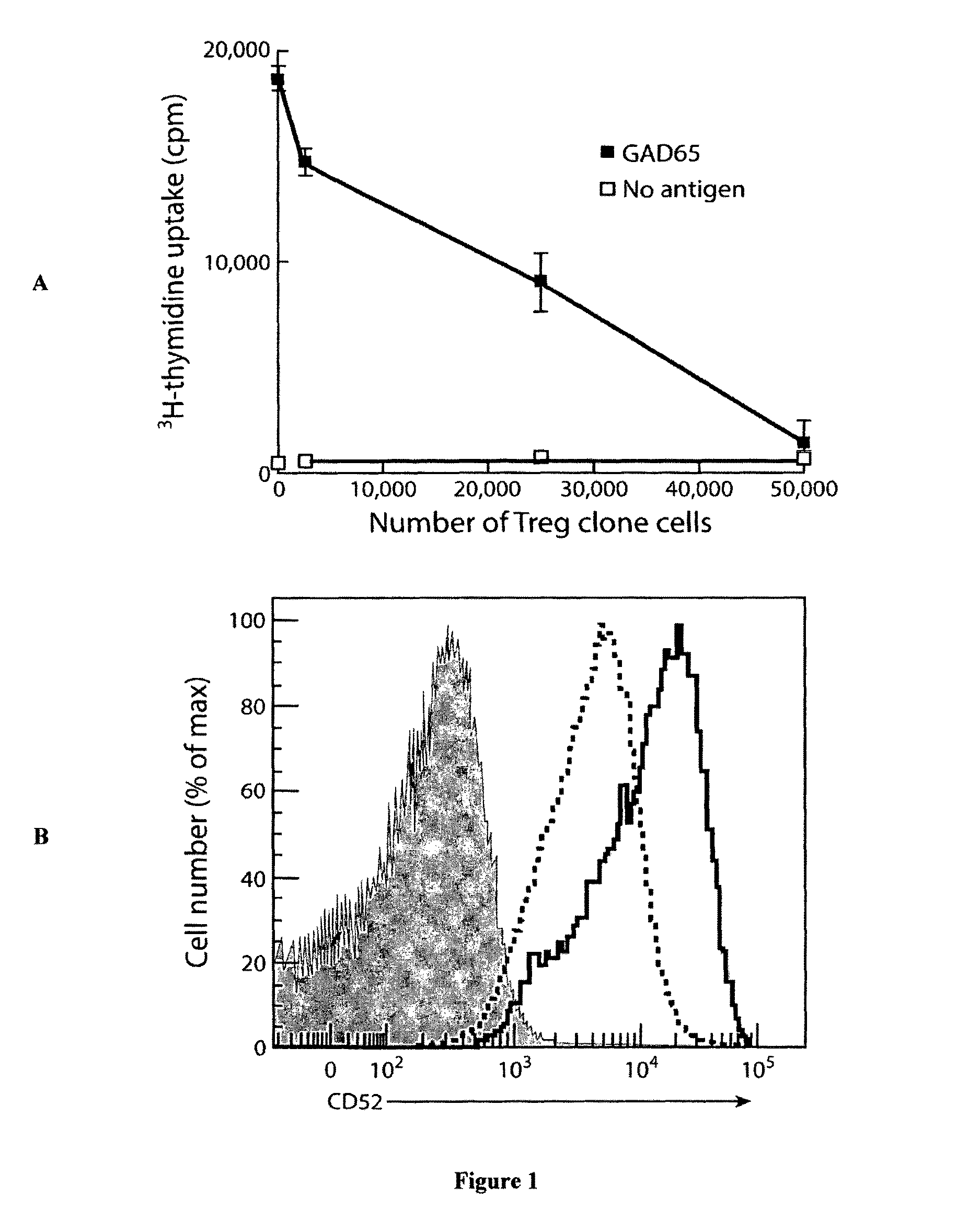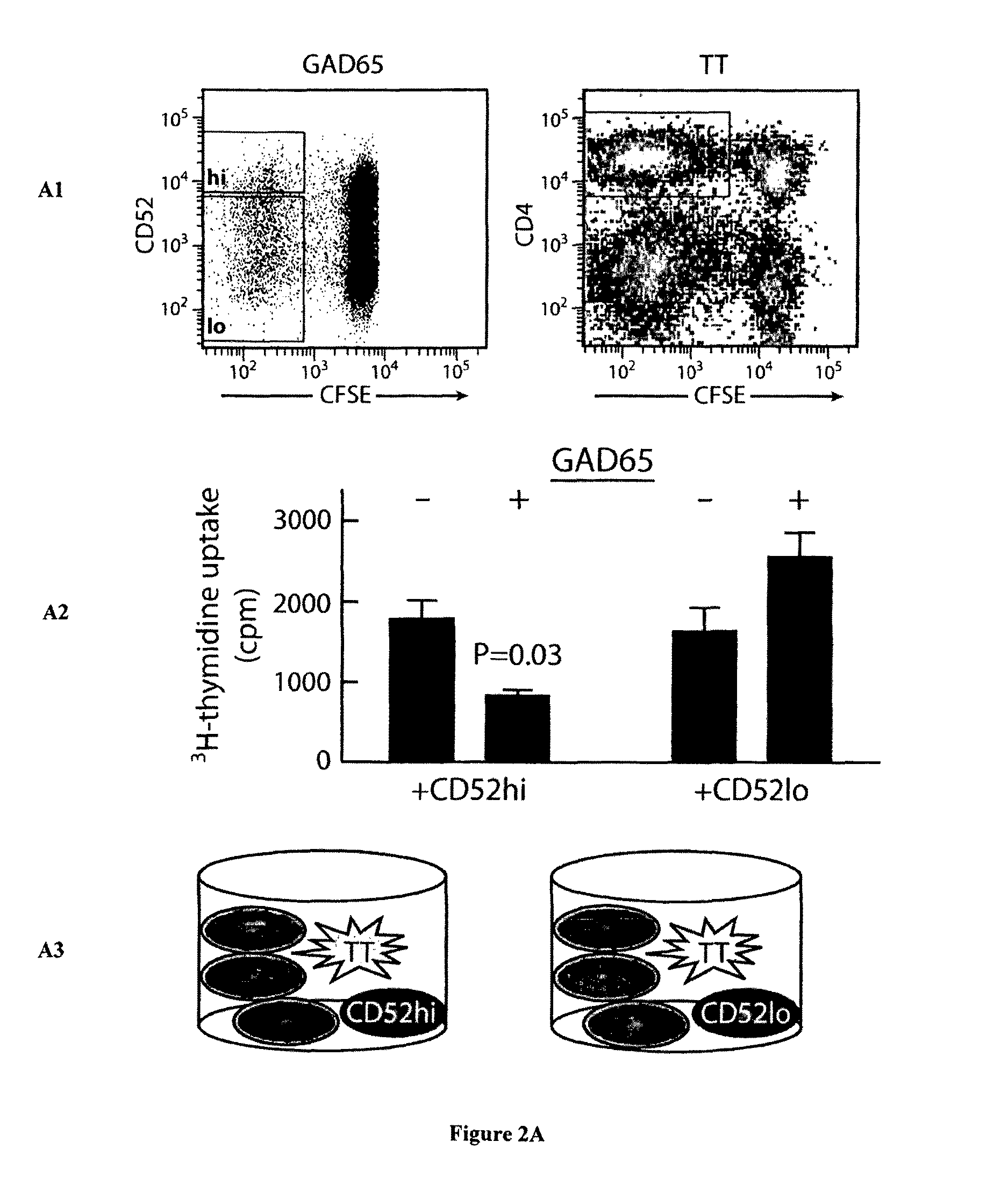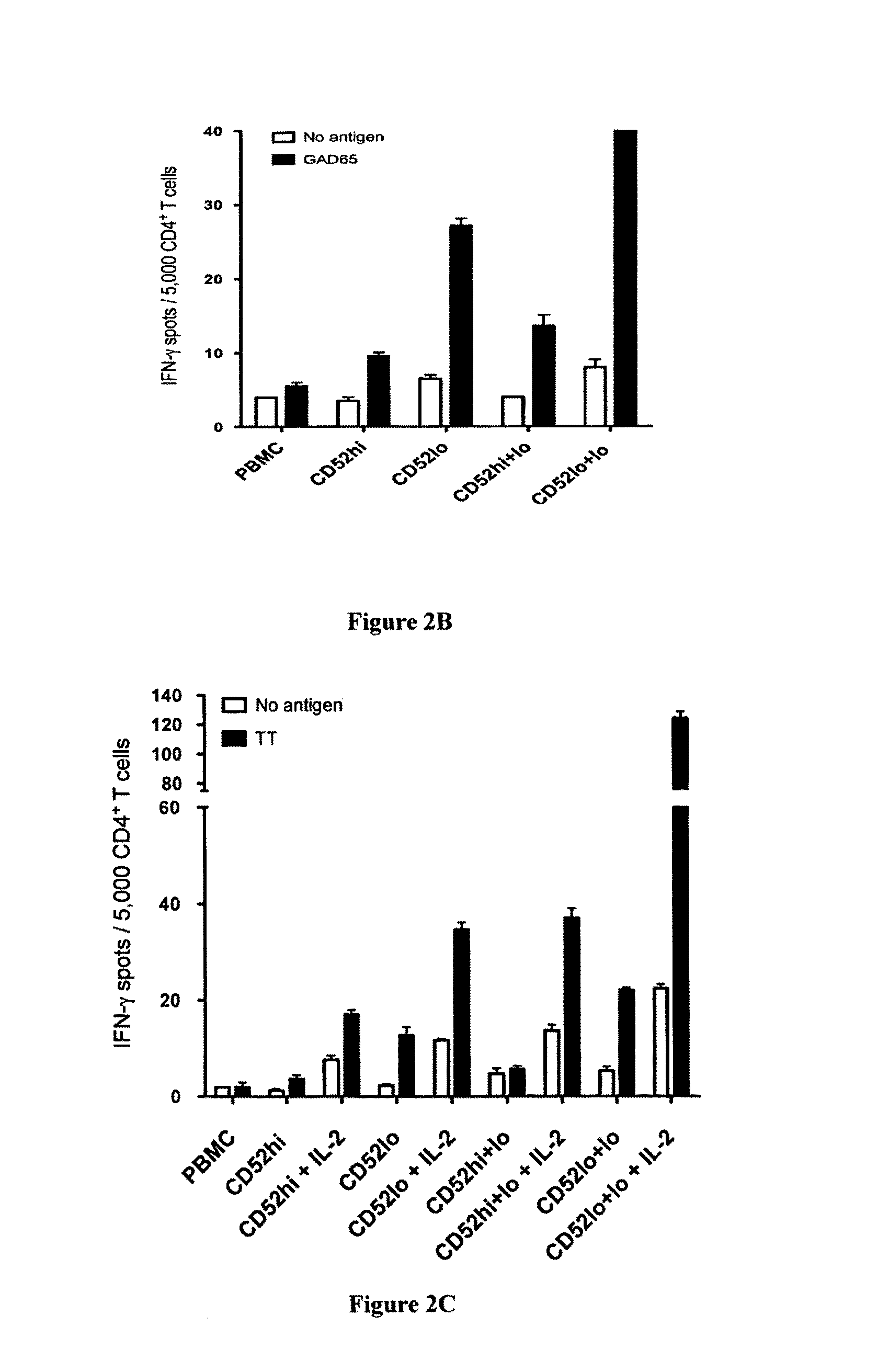Soluble mediator
a soluble mediator and cell technology, applied in the field of soluble mediators, can solve the problems that the mechanism of immune suppression has not been characterized befor
- Summary
- Abstract
- Description
- Claims
- Application Information
AI Technical Summary
Benefits of technology
Problems solved by technology
Method used
Image
Examples
example 1
Analysis of GAD65-Specific CD4+ T-Cell Clones
Methods
[0308]GAD65-specific CD4+ T-cell clones, previously generated and screened for GAD65-specific suppressor function, were thawed and cultured as described (Dromey et al., 2011). Initially, suppressor and non-suppressor clones were screened for surface markers against an array of solid phase antibodies (Medsaic Ptd Ltd, Sydney, Australia) (Belov et al., 2003). Clones (1×106) were taken directly from culture and analysed resting or after stimulation for 24 hrs with plate-bound anti-CD3 (5 μg / ml). For phenotyping by flow cytometry, cells were stained on ice with the appropriate concentrations of labelled antibodies. Staining for intracellular FoxP3 and intracellular CTLA-4 was combined.
Results
[0309]Screening pairs of autologous suppressor and non-suppressor clones for differences in surface phenotype using a CD antibody array revealed that activated suppressor clones were consistently found to have higher expression of CD52, a result wh...
example 2
Analysis of Blood CD4+ CD52hi T-Cells
Methods
[0310]PBMCs stained with carboxyfluorescein succinimidyl ester (CFSE) were cultured in IMDM in 96-well round-bottom plates, without or with GAD65 or TT, at 2×105 in 200 μl in replicates of six. After 7 days, replicates were pooled, washed in 0.1% BSA-PBS and stained on ice with anti-human CD4-PE, -PECy7 or -APC and CD52-PE (clone CF1D12) antibodies. Viable (propidium-iodide negative) CFSEdim CD4+ cells that had undergone division in response to GAD65 were sorted in a FACSAria (BD Biosciences, North Ryde, NSW, Australia) into fractions with the highest to the lowest CD52 expression, and single cells cloned as described (Dromey et al., 2011). Subsequently, in response to GAD65 or TT, CD52hi and CD52lo populations corresponding, respectively, to the upper 10% and lower 10% of CD52 expression on undivided CD4+ cells were sorted for further study. These cut-offs were chosen because the majority of GAD65-specific suppressor clones generated were...
example 3
CD52hi CD4+ T-Cells are Distinct from CD4+ CD25+ Treg Cells
Methods
[0317]PBMCs were labelled with anti-CD25a antibody and depleted of CD25hi cells on an AutoMACS column (84% compared to isotype control antibody ‘depletion’). Cells were then labelled with CFSE and incubated with TT for 7 days before being sorted into CD52hi and CD52lo cells, reactivated by TT and analysed by ELISpot assay.
Results
[0318]Following depletion of CD25hi cells, the proportion of divided CD52hi CD4+ cells in response to TT increased (18.1% versus 11.8% with control depletion) but their suppressor function after reactivation with TT remained unchanged (FIG. 3). Thus, suppressor CD52hi CD4+ cells do not appear to be derived from the population of CD4+ CD25+ T-cells.
PUM
| Property | Measurement | Unit |
|---|---|---|
| concentrations | aaaaa | aaaaa |
| quantitative real time RT- | aaaaa | aaaaa |
| pH | aaaaa | aaaaa |
Abstract
Description
Claims
Application Information
 Login to View More
Login to View More - R&D
- Intellectual Property
- Life Sciences
- Materials
- Tech Scout
- Unparalleled Data Quality
- Higher Quality Content
- 60% Fewer Hallucinations
Browse by: Latest US Patents, China's latest patents, Technical Efficacy Thesaurus, Application Domain, Technology Topic, Popular Technical Reports.
© 2025 PatSnap. All rights reserved.Legal|Privacy policy|Modern Slavery Act Transparency Statement|Sitemap|About US| Contact US: help@patsnap.com



